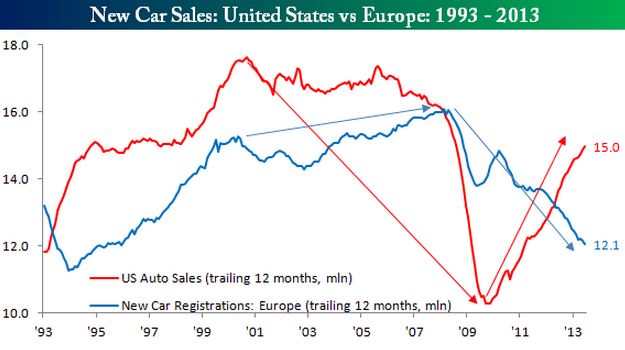By Steve Sosnick, Chief Strategist at Interactive Brokers
For those of you who are vague on high school physics, it may be time for a reminder about Newton’s Laws of Motion, particularly the first one:
“An object at rest remains at rest, and an object in motion remains in motion at constant speed and in a straight line unless acted on by an unbalanced force.”
My reason for this reminder is that it may be particularly applicable to market movements for the rest of this calendar year.
Market Forces
In recent weeks, the path of motion has been higher, and there are few unbalanced forces that are likely to act upon it prior to year-end.
Simply put:
- the long-term trend of the market has been relentlessly higher for the past 21 months;
- there are hordes of institutional investors and corporate executives who are incentivized to have a wide range of stocks close at or near their highs
- we are in a period of seasonally light volume
- there are few “known unknowns” that are likely to affect the prior 3 items
That seems like a very good setup for a market that grinds higher into year end.
Omicron Risks
We’ve had rocky trading sessions this month, but remember that it coincided with a new closing high of the S&P 500 Index (SPX) was reached.
There are worries about the spread of Omicron Covid and the apparent demise of the Build Back Better stimulus bill. Those knocked major indices about 2% earlier in the month, before they recovered.
Traders took some encouragement from the notion that Omicron may not be as virulent as feared, and that Senator Manchin said he would support a $1.75 trillion bill, just not the $2 trillion that is proposed. Enthusiasm over the latter point seems valid.
During my years as a market maker, a trading spread of 1 ¾ – 2 was rarely an impediment to trading. We don’t know yet if the enthusiasm over Omicron is valid, however. The virus is spreading rapidly, and hospitalizations are not accelerating at the same pace. That’s great.
Hotspots
But the biggest hotspots are in places where vaccination rates are high, so scientists are having a difficult time figuring out whether the vaccine or the virus itself is keeping serious case rates in check.
While the early evidence is favorable, we probably won’t really know the full effects until sometime after New Year’s, when people return home to less vaccinated regions after holiday vacations elsewhere.
The prior sentence sums up the idea behind today’s premise. Markets have decided that the virus isn’t a major problem right now, and won’t know for sure until after the calendar turns.
Exogenous events can always crop up, but in their absence there are few catalysts for volatility or reasons to expect a sharp selloff. As we scan the horizon for the “unbalanced forces” that could deter stocks from their upward path for the next week and a half, there are few, if any.
Takeaway
Looking ahead, of course there are numerous potential catalysts looming on the horizon. Central bank tightening, inflation, and geopolitical concerns over Ukraine and Taiwan are just a few. And we’ve already discussed Covid.
Since the release of the Federal Reserve’s preferred inflation measure, the PCE deflator, we can largely remove the first two from the market’s mindset for the next two weeks. The market in motion is likely to remain in motion.
As for Sir Isaac Newton, his genius remains revered even centuries later. But his investing experience offers a cautionary tale. Newton made a highly profitable investment in the South Sea Company, only to lose three times that amount as the shares fell.
It is not clear which unbalanced force caused that bubble to pop, but the great scientist learned a nasty lesson that markets don’t always follow real-world principles.
This post first appeared on December 22 on the Traders’ Insight blog.
Photo Credit: 401(k) 2012 via Flickr Creative Commons
DISCLOSURE: INTERACTIVE BROKERS
The analysis in this material is provided for information only and is not and should not be construed as an offer to sell or the solicitation of an offer to buy any security. To the extent that this material discusses general market activity, industry or sector trends or other broad-based economic or political conditions, it should not be construed as research or investment advice. To the extent that it includes references to specific securities, commodities, currencies, or other instruments, those references do not constitute a recommendation by IBKR to buy, sell or hold such investments. This material does not and is not intended to take into account the particular financial conditions, investment objectives or requirements of individual customers. Before acting on this material, you should consider whether it is suitable for your particular circumstances and, as necessary, seek professional advice.
The views and opinions expressed herein are those of the author and do not necessarily reflect the views of Interactive Brokers LLC, its affiliates, or its employees.
Any trading symbols displayed are for illustrative purposes only and are not intended to portray recommendations.In accordance with EU regulation: The statements in this document shall not be considered as an objective or independent explanation of the matters. Please note that this document (a) has not been prepared in accordance with legal requirements designed to promote the independence of investment research, and (b) is not subject to any prohibition on dealing ahead of the dissemination or publication of investment research.



